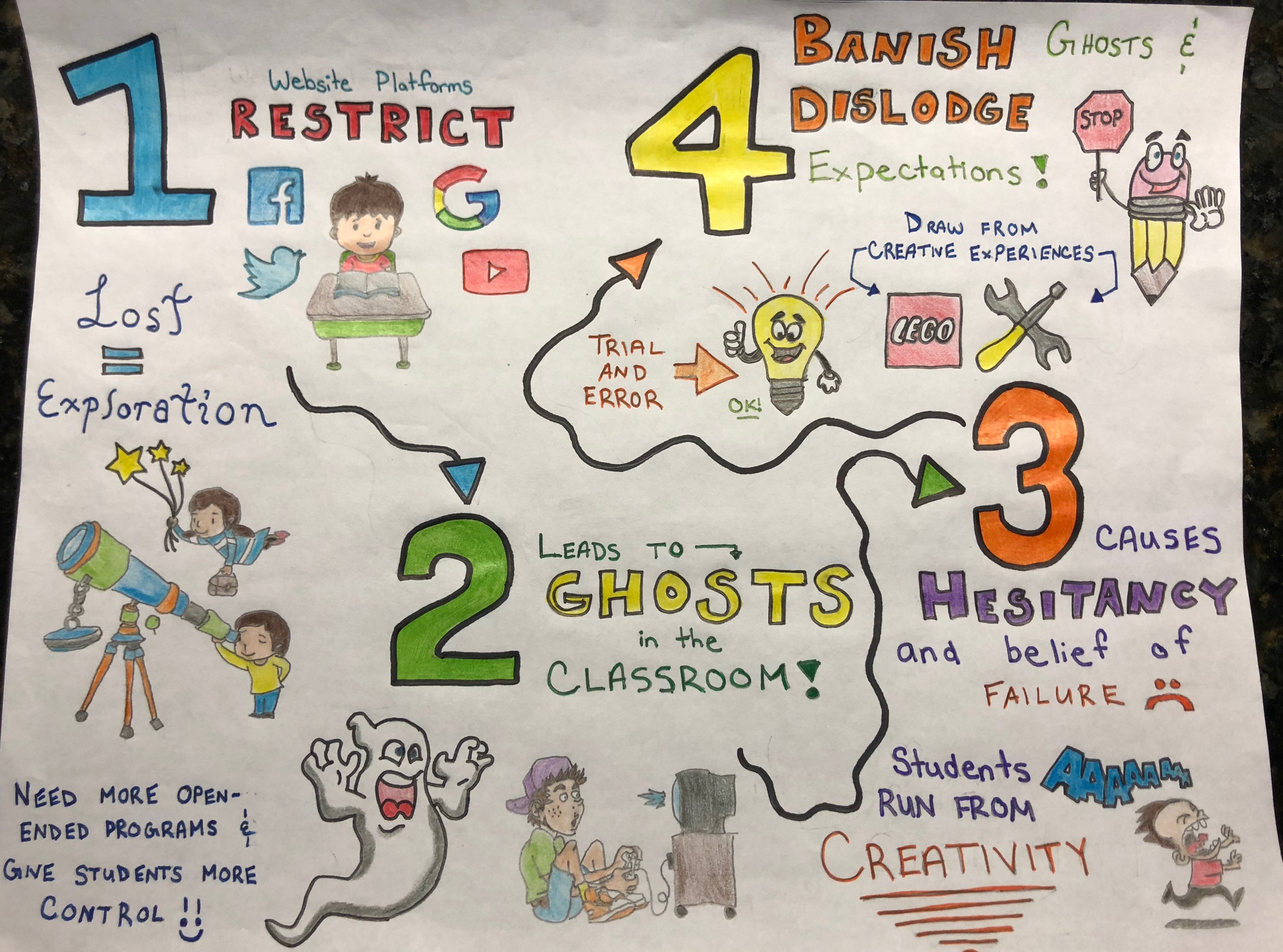I chose to respond to the podcast “HybridPod*: Episode 10 – Questioning Learning”, where Chris Friend and Amy Collier compare standardized education to personalized lessons, using a Powtoon** video. The podcast mentions how “best practices” in education do not mean that the individual is acquiring the skills and knowledge that are right for them. Instead, students are being taught and evaluated the same way, based on a general testing and very generic learning outcomes. This results in “standardized content, standardized delivery and standardized humans,” where the personal purpose of education is absent. Amy mentions how teachers should question their purpose and connection with their students more often. Rather than just wanting students to “understand” content – which is a term that is unmeasurable, and incomplete – it is important to think positively about the learning experience using “rhetoric of opportunity” and ask questions, such as; “For whom is education? Why do we do it?”, “How do we know when they are learning?”, and “What learning outcome would cause me to wonder? To be blown away?”. If these reflection questions are paired up with a teacher who is willing to take risks, embrace discomfort, experiment with unpredictability, and set uncertainty as a goal, then the students will have a real opportunity to thrive in education.
I found this podcast to have an interesting take on the controversial topic of standardized education. The speakers explain both sides of the argument using pros and cons of each, which really left me torn. My opinion on standardized education did not change after listening to this podcast, however I noticed that I do possess a fear of embracing uncertainty in learning outcomes. We are taught as future educators to plan our lessons with specific goals in mind, particularly those of curriculum expectations, but we are in a new era of education where the focus in to inspire our students to be life long learners. The best way this can be done is to focus on the way the students are gaining knowledge, rather than blindly following the old formulaic approach that we are comfortable with. Students should be encouraged to be creative and think for themselves. I hope to one day find a way of educating where I am just as inspired by my students, as they are by me.
When using Powtoon, I felt that the medium allowed for a lot of creativity, but was at times quite confusing. There are several elements to choose from on this platform, which all add value to the media if used correctly. However, it was not easy finding the exact elements that portrayed the message that I wanted (especially when half of them are “pro” elements requiring a $200/year subscription). On a more positive note, the tutorial videos were very helpful, and the templates were a great starting point for my creative process. I did not choose to use a template in the end, but after seeing how they were played out, I was able to see how Powtoon videos can be used to enhance a message, rather than simply describing my idea in words. Overall, I feel that Powtoon is a great example of how teaching (using any form of technology, or in general) can be tricky at first, but with the right guidance, it is possible to make any lesson your own.
Now check out my video for yourself!
*The HybridPod podcast can be found here.
**Here is the Powtoon link to the video: “Questioning Learning”
Out with the old ways of standardized education…
And in with the new! Check out Dan Meyer’s creative way of teaching Math concepts through youtube videos, as an example of this! Chris and Amy reference this concept at the end of the podcast as an example of relishing in uncertainty because the scenarios beg the curiosity that drives the educational experience.


 udent’s creativity by making them believe there is only one right way of accomplishing tasks similarly to standardized education. Moreover, through these platforms, users are not developing the digital skills needed to succeed. Instead, these technological platforms such as Piktochart which I used to create my poster, has preset templates which allows users to use a drag-and-drop
udent’s creativity by making them believe there is only one right way of accomplishing tasks similarly to standardized education. Moreover, through these platforms, users are not developing the digital skills needed to succeed. Instead, these technological platforms such as Piktochart which I used to create my poster, has preset templates which allows users to use a drag-and-drop  method. Although this copy and paste method ultimately makes the process easier and faster, it also tends to limits creativity and exploration. Having made a poster myself, I can say that the templates and preset images made it easy for me to not be a creator. To add on, having to use a platform that I was unfamiliar with caused much frustration and anxiety because I was not getting the results I wanted. While creating my Piktochart, I had a vision but I found the search engine for Piktochart restricted me because I could not find the images I was looking for. Using Piktochart for the first time was challenging due to my lack of knowledge of this medium.
method. Although this copy and paste method ultimately makes the process easier and faster, it also tends to limits creativity and exploration. Having made a poster myself, I can say that the templates and preset images made it easy for me to not be a creator. To add on, having to use a platform that I was unfamiliar with caused much frustration and anxiety because I was not getting the results I wanted. While creating my Piktochart, I had a vision but I found the search engine for Piktochart restricted me because I could not find the images I was looking for. Using Piktochart for the first time was challenging due to my lack of knowledge of this medium.
